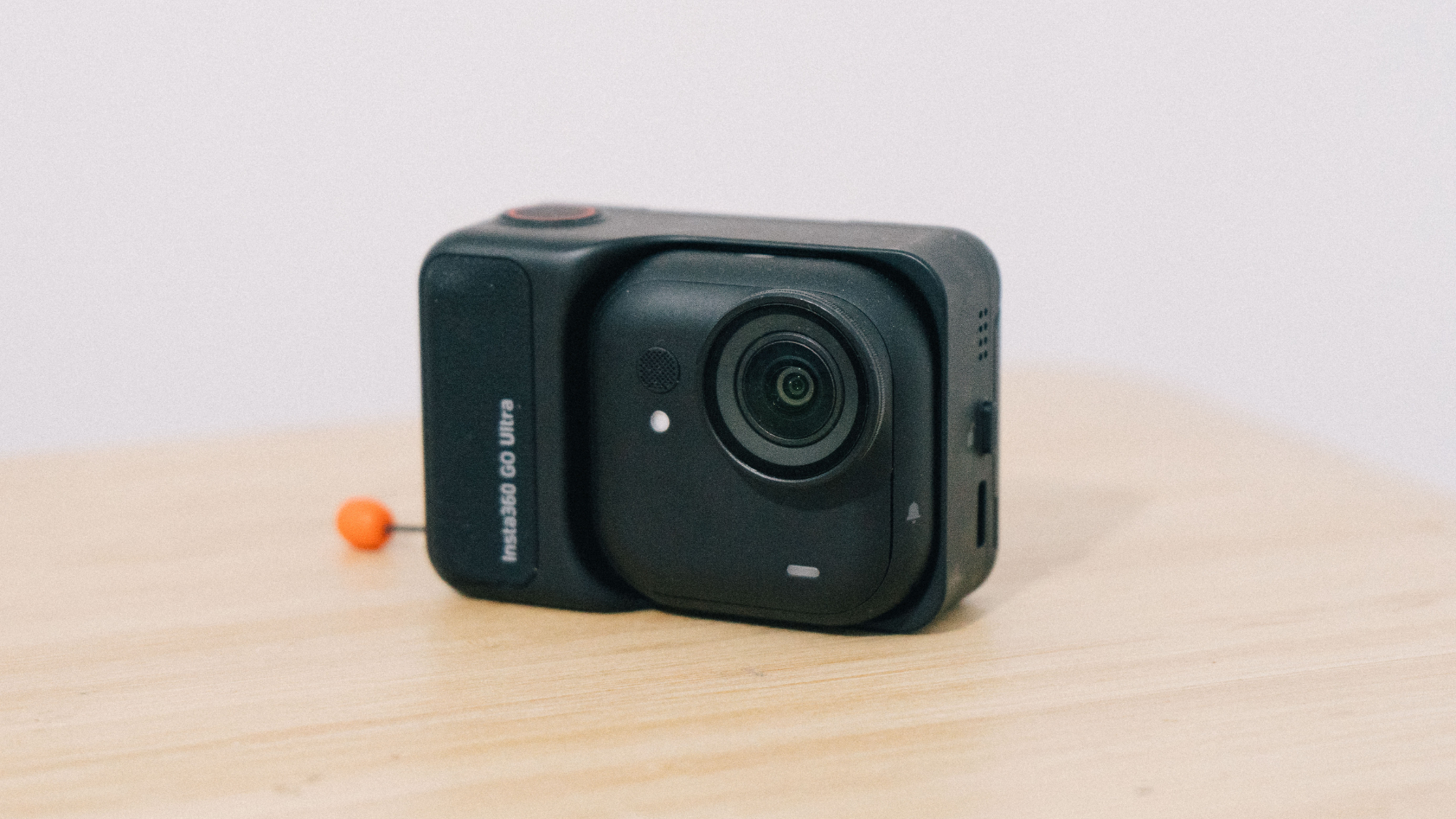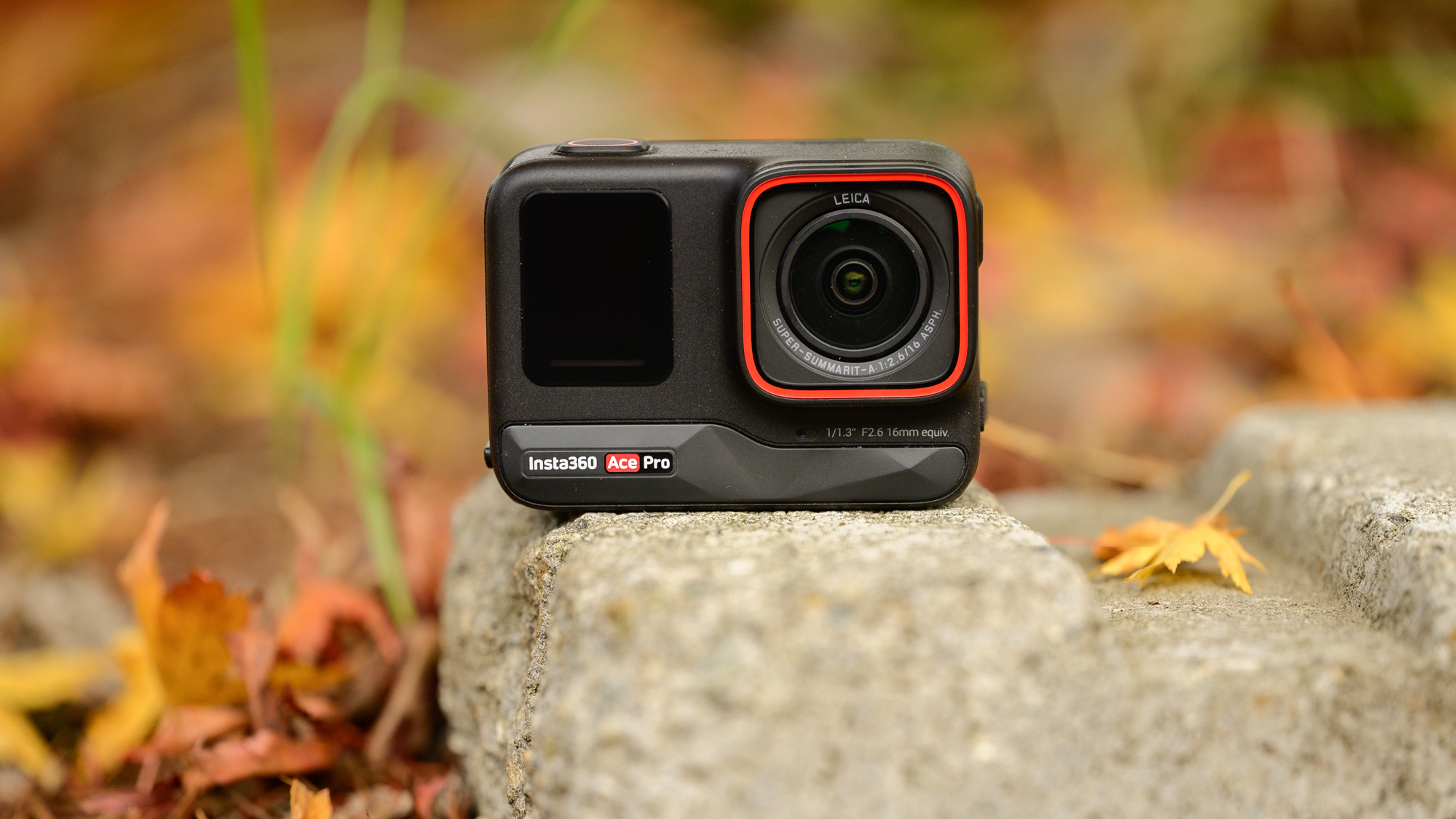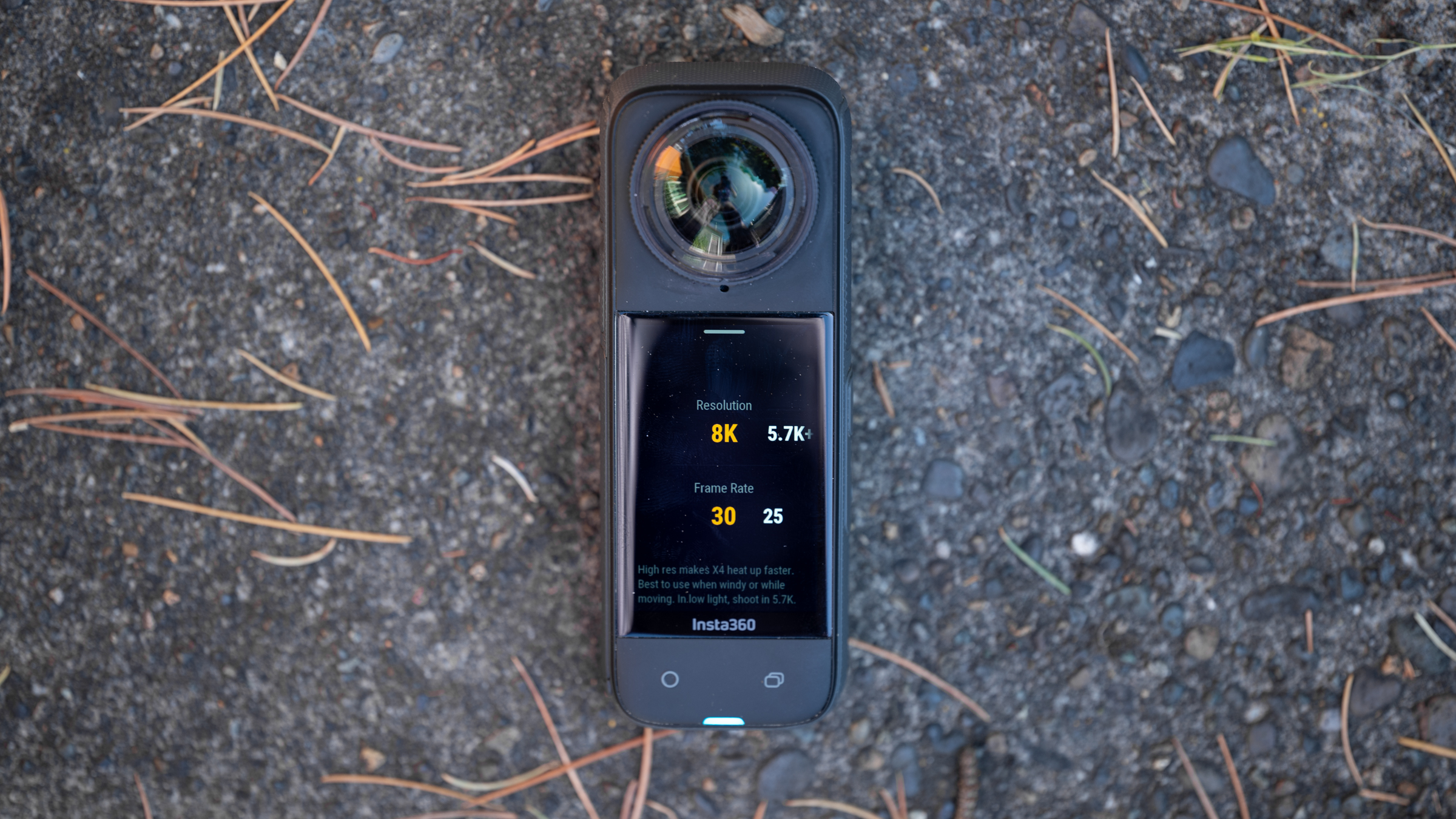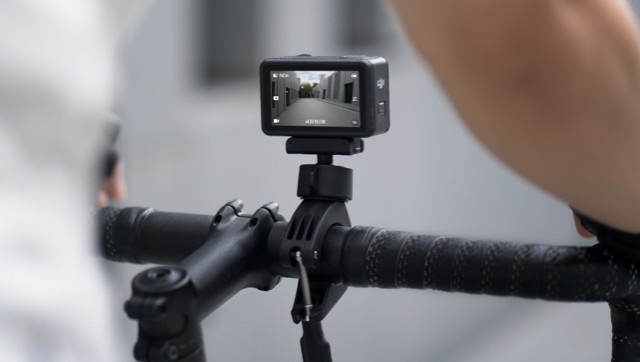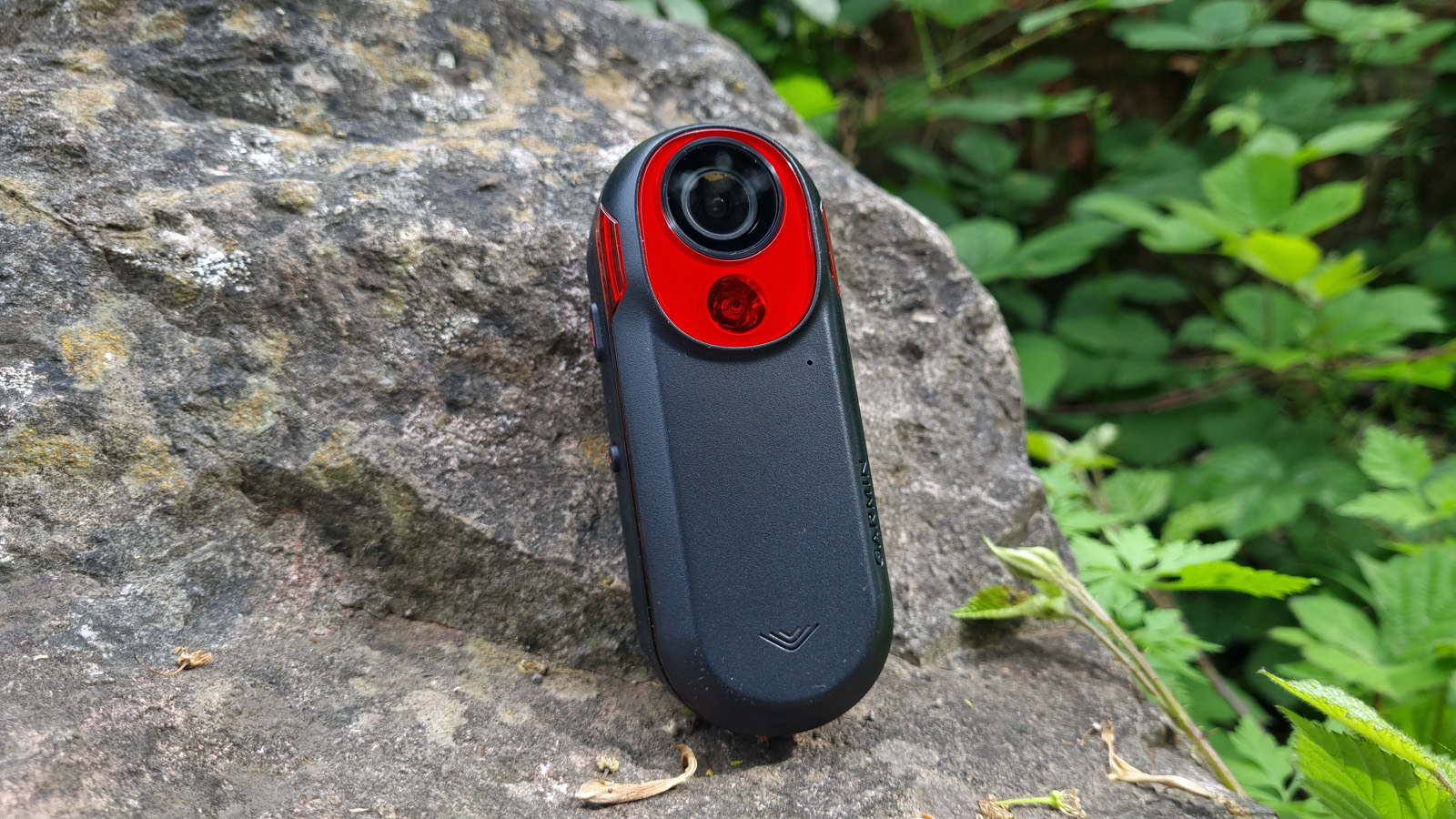Best action cameras for cyclists: Record your ride for all to see
The best action cameras are small and tough, yet make it easy to capture video and edit it, perfect for creating all kinds of content
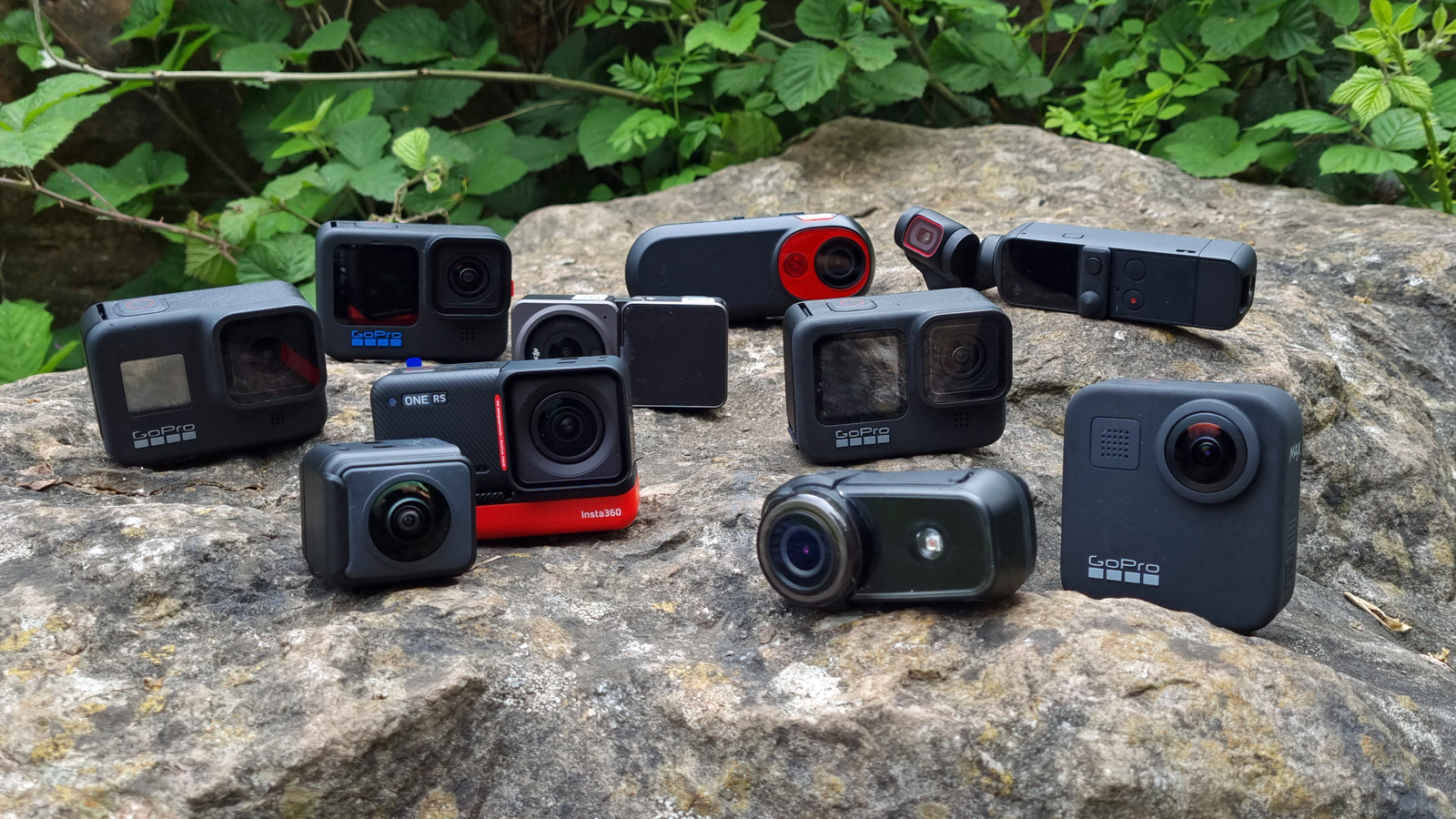
- Quick list
- 1. Best action camera for cycling
- 2. Best for video quality
- 3. Best for compact 4K
- 4. Best for 360 footage
- 5. Best for battery life
- 6. Best for incedent recording
- 7. Best for rearward ride recording
- 8. Best for crash detection
- 9. Best drone camera
- 10. Best intigrated camera
- How to choose
- Everything you need to know
- How we test
The best action cameras for cyclists allow you to film your ride, whether that's because you fancy producing video for social media or just want a record in case something goes awry.
But choosing the best action camera for cyclists is tricky, as there are so many choices, formats and functions available. You want something that you can ride with easily, either attached to your bike or yourself and that gives adequate runtime for an extended cycle ride. Image stabilisation is important too. Some cameras double up and function as well as the best bike lights.
Once you get home, you may enjoy spending hours in the editing room, getting the perfect cut, or you may just want to download your footage and do the minimum to keep a record. Some action cameras come with extensive editing software, others come with none, and a few allow you to get things done quickly and easily.
Keep reading for our pick of the best action cameras for cyclists, and beneath that, you'll find a How To Choose section with some of the key considerations when picking an action camera for your needs.
Quick list: Best action cameras for cycling
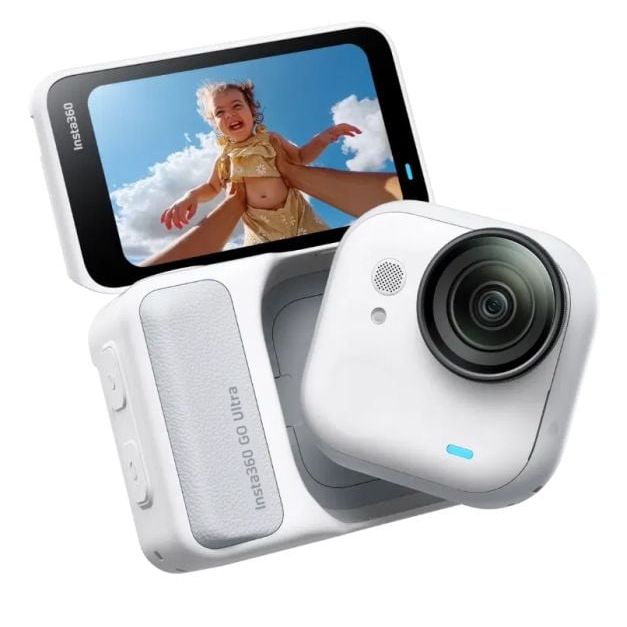
The tiny Insta360 Go Ultra is a versatile option, although its image resolution is lower than other action cameras and its battery life is shorter without being docked in its Action Pod.
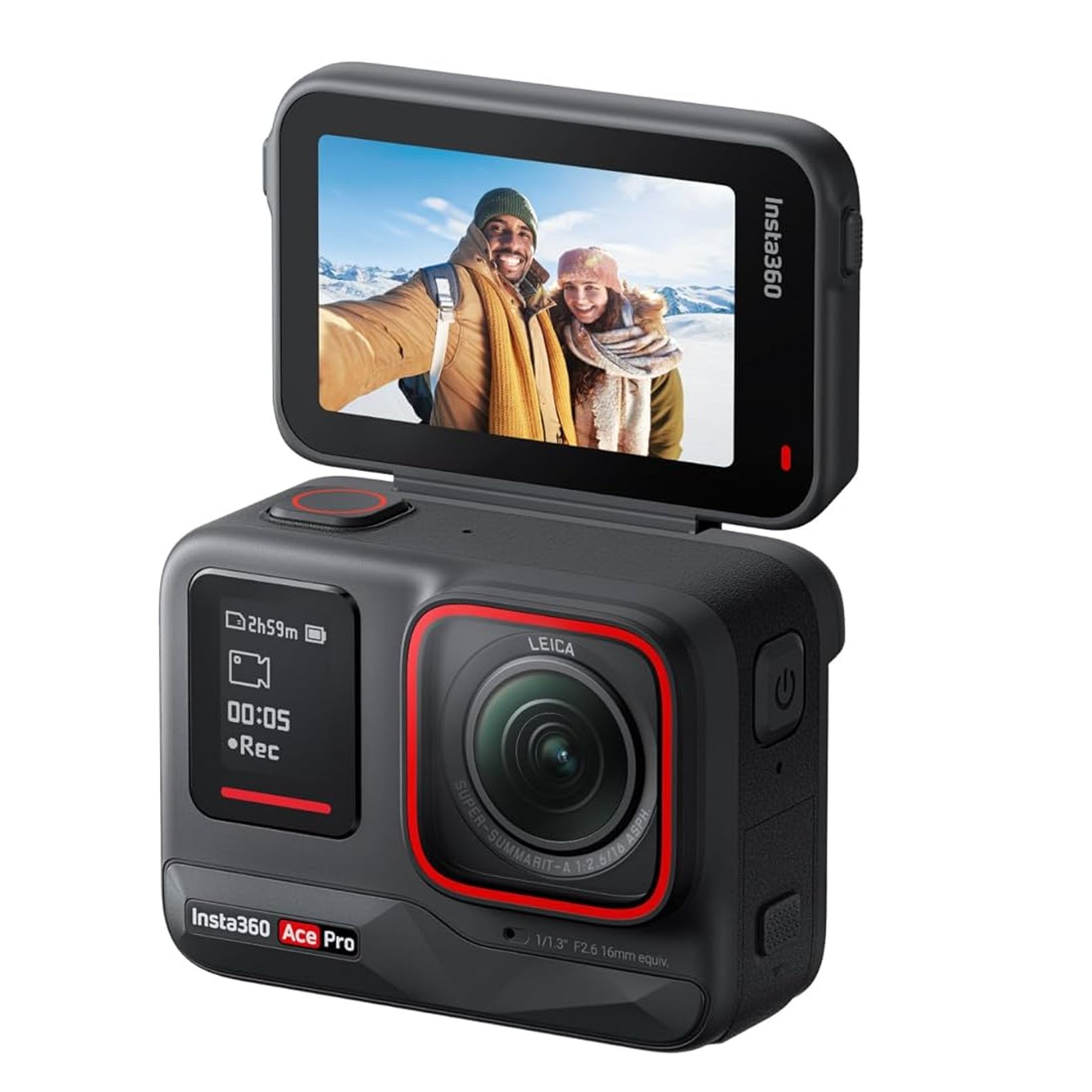
The Ace Pro 2 is Insta360's top action camera, allowing you to take 8k video in a range of formats, including 16:9. It offers impressive image stabilisation and high-quality stills as well. It's pricey though and battery life is a bit short for longer rides.
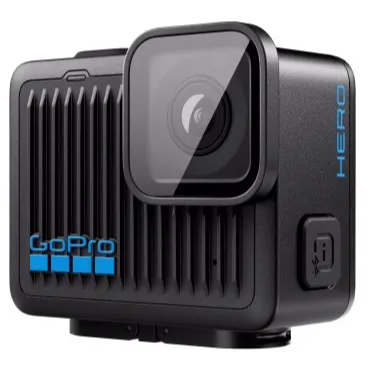
GoPro shrunk its action camera, doing away with some of the more advanced features to half the weight, making it a great option for mounting to a helmet or on the bike and capturing high-quality 4K footage.
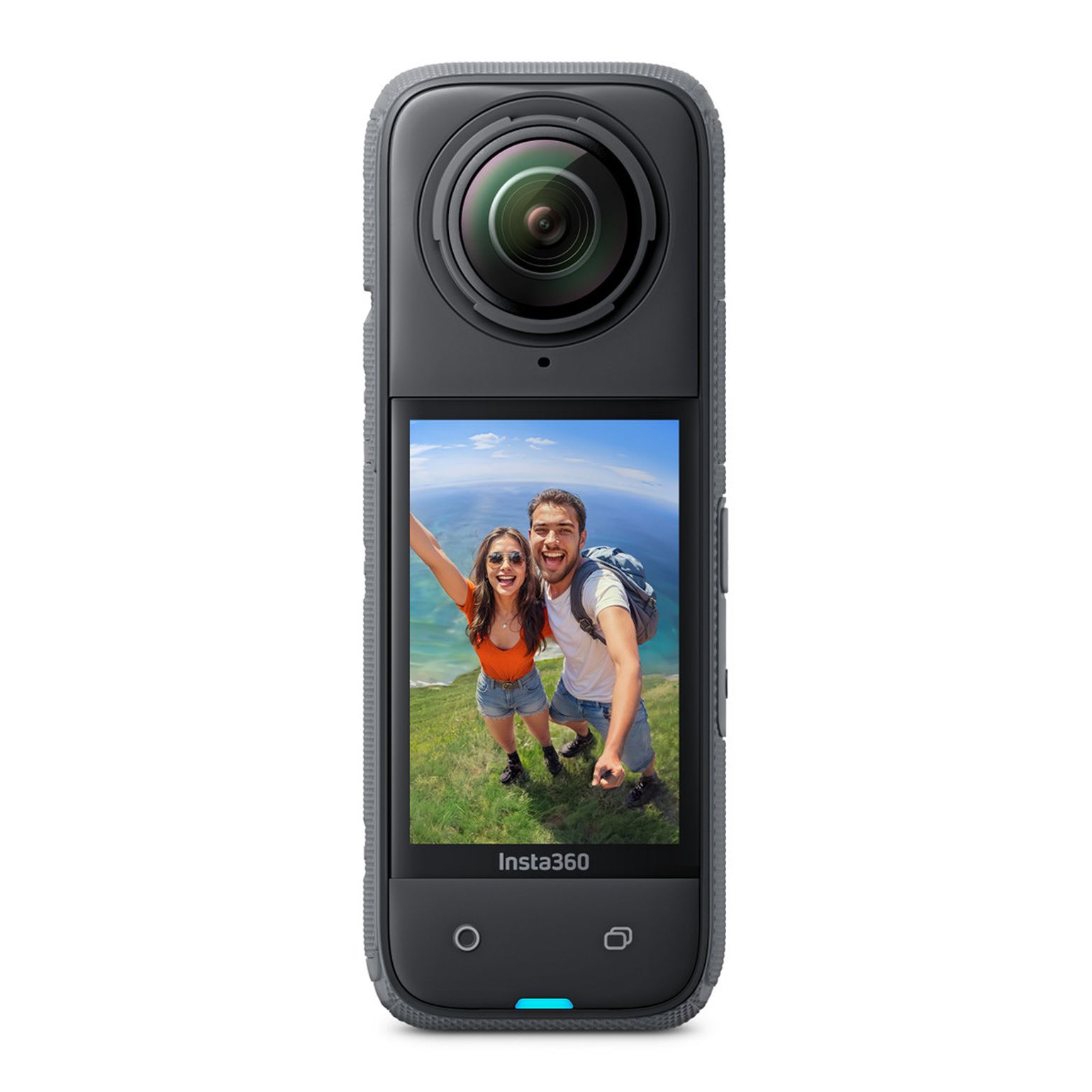
The Insta360 X4 gives you 360-degree images, which you can edit down later to focus on the parts that you want. Its 8K resolution means that the footage is 4K even after editing.
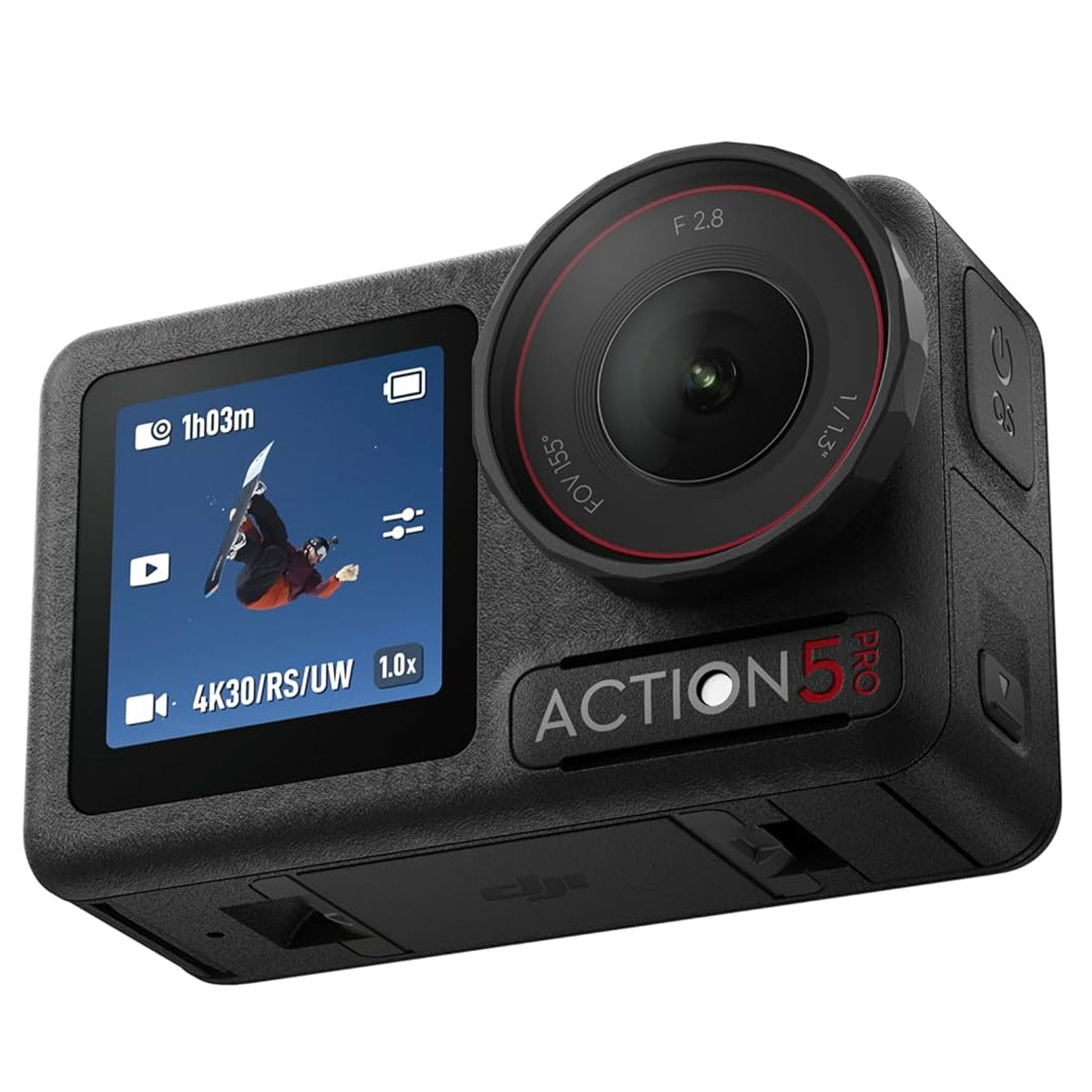
DJI's answer to the GoPro Hero13 has a significantly longer run time of 240 minutes (claimed). It's packed with image stabilisation tech too, including for night rides.
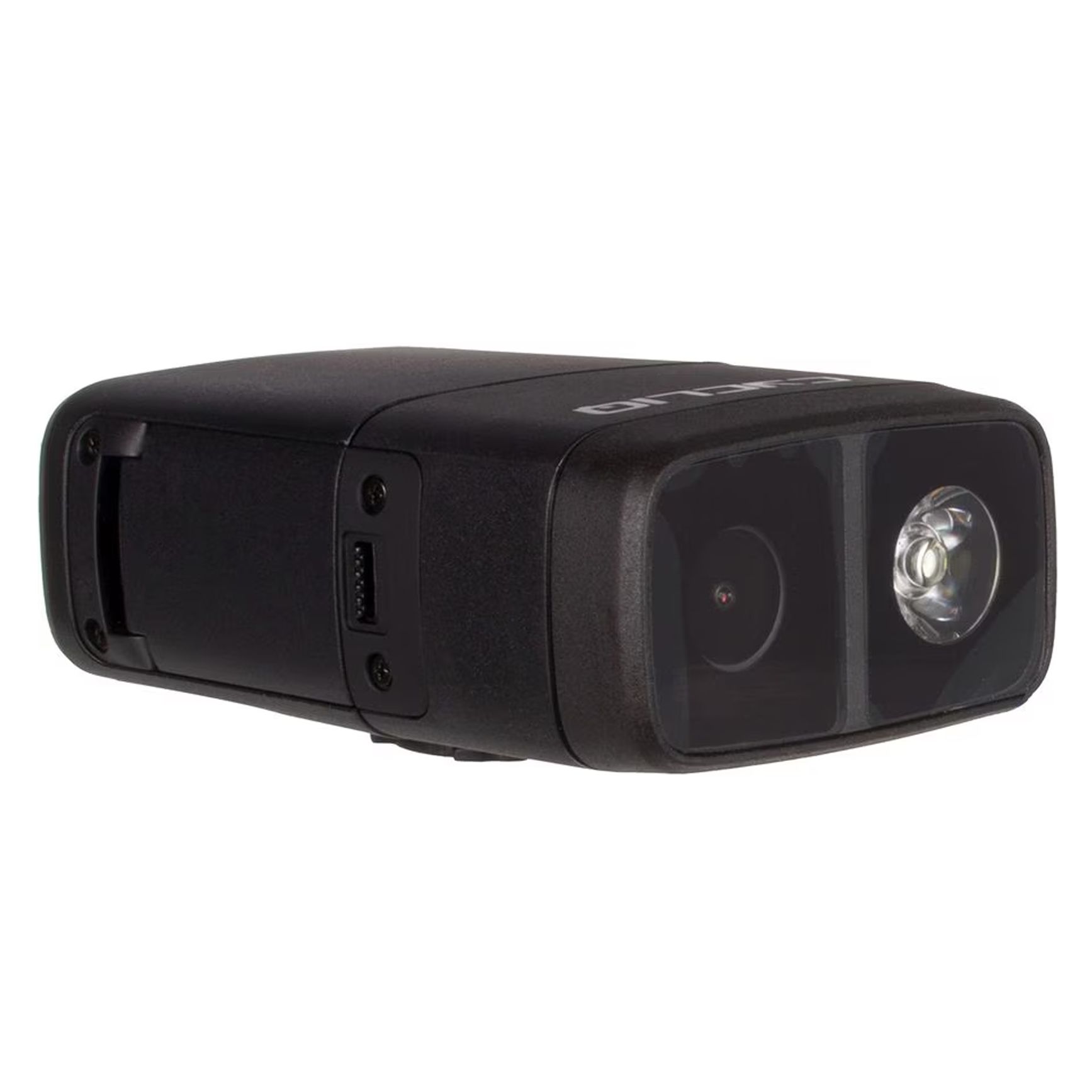
If your main aim is to have a record of your ride in case something happens, the Cycliq Fly 12 loop records footage and can detect a potential incident and store the images for later. You get a front light too.
Last updated October 2025 Added the Insta30 Go Ultra, Oakley Meta Vanguard and Hoverair X1 Pro to the gudie, plus updated products to newer versions that have launched, checked specs and availability, and added buying criteria.
Best action cameras for cycling
You can trust Cyclingnews
Best action camera for cycling
1. Insta360 Go Ultra
Specifications
Reasons to buy
Reasons to avoid
✅ You want a tiny, versatile camera: The Go Ultra is tiny and weighs next to nothing, meaning it's easy to mount anywhere.
✅ You want easy battery life extension: The Go Ultra clips easily into the Action Pod to give you longer shoot times.
❌ You want continuous shooting: You'll need to be selective about when to switch on to avoid draining the battery when recording longer clips.
Much like the smaller Go cameras, the Insta360 Go Ultra utilises a mothership body, which can be operated standalone, or the camera pod can be removed and placed wherever you like and operated as a slave unit, with the body acting as a hub.
The camera pod is a little larger than that of the excellent Insta360 Go 3, but it’s still far easier to clip to or mount on things than the larger GoPro cameras I’ve tried, and those from DJI too. You get more battery, better resolution, and better low-light performance than the Go 3 too, as well as all the handy features like a flip-up screen for framing, and a plethora of useful accessory options.
Specs aside, the Go Ultra is small enough to be basically unobtrusive on the bike. I’ve used it with the magnetic pendant and the footage, with stabilisation on, is pretty exceptional considering I didn’t need a bulky chest harness. Likewise, on a helmet, you can forget it’s there and just get on with riding and recording.
The master/slave system is also so much easier for framing up POV shots and other shooting scenarios too, as you don’t have to mess about inside an app. You’d be amazed at how much time and frustration this saves, and it's why it’s our preferred system for on-bike shooting nowadays.
Best for video quality
Specifications
Reasons to buy
Reasons to avoid
✅ You want pro quality video: The Ace Pro 2 offers Insta360's top spec.
✅ You want easy editing: The phone editing app is first rate.
❌ You want extras included: There are lots of extra-cost items you will probably want.
❌ You want a lower price: The cost of the camera plus all the extras mounts up.
The Ace Pro 2 is Insta360's current top camera, offering a slight upgrade in image resolution and runtime over the previous generation, and has all the bells and whistles a budding filmmaker or professional could ask for. Compared to Insta360's range of 360 cameras, modular design or tiny form factors, the Ace Pro 2 is far more conventional. There are still plenty of novel design features, along with higher quality and class-leading image stabilisation.
The Insta360 Ace Pro 2 may not reinvent the wheel, but it takes everything you love about action cameras and elevates the experience. Yes, it does 8K recording, but it probably will be overkill for most. While other cameras offer app editing and accessory compatibility, the Ace Pro 2 stands out by seamlessly bundling all the essential tools a content creator needs into one user-friendly package. It’s not flawless — some minor tweaks are still needed — but what it delivers is undeniably impressive. Capture yourself with crystal-clear audio, experiment with creative angles, and shoot stunning cinematic scenes when inspiration strikes. Then, effortlessly transform your footage into a polished story right on your phone, ready to share on your favourite platform.
The Insta360 isn't short of add-ons, including external mics, cold shoe and GPS Remote controls. It can also be bought with a plethora of mounting options, although the camera uses a magnetic adapter rather than a finger-style action camera mount or threaded camera tripod mount. You can choose from a wide variety of mounts, it's just a two-stage process rather than directly to the camera when mounting it to your handlebar or helmet, strapping it to your chest, or holding it via a grip.
It's a pricey option, which is why we recommend this more for the professionals who are paying for the extra special quality.
Check out our full review of the Insta360 Ace Pro for more details.
Best for compact 4K
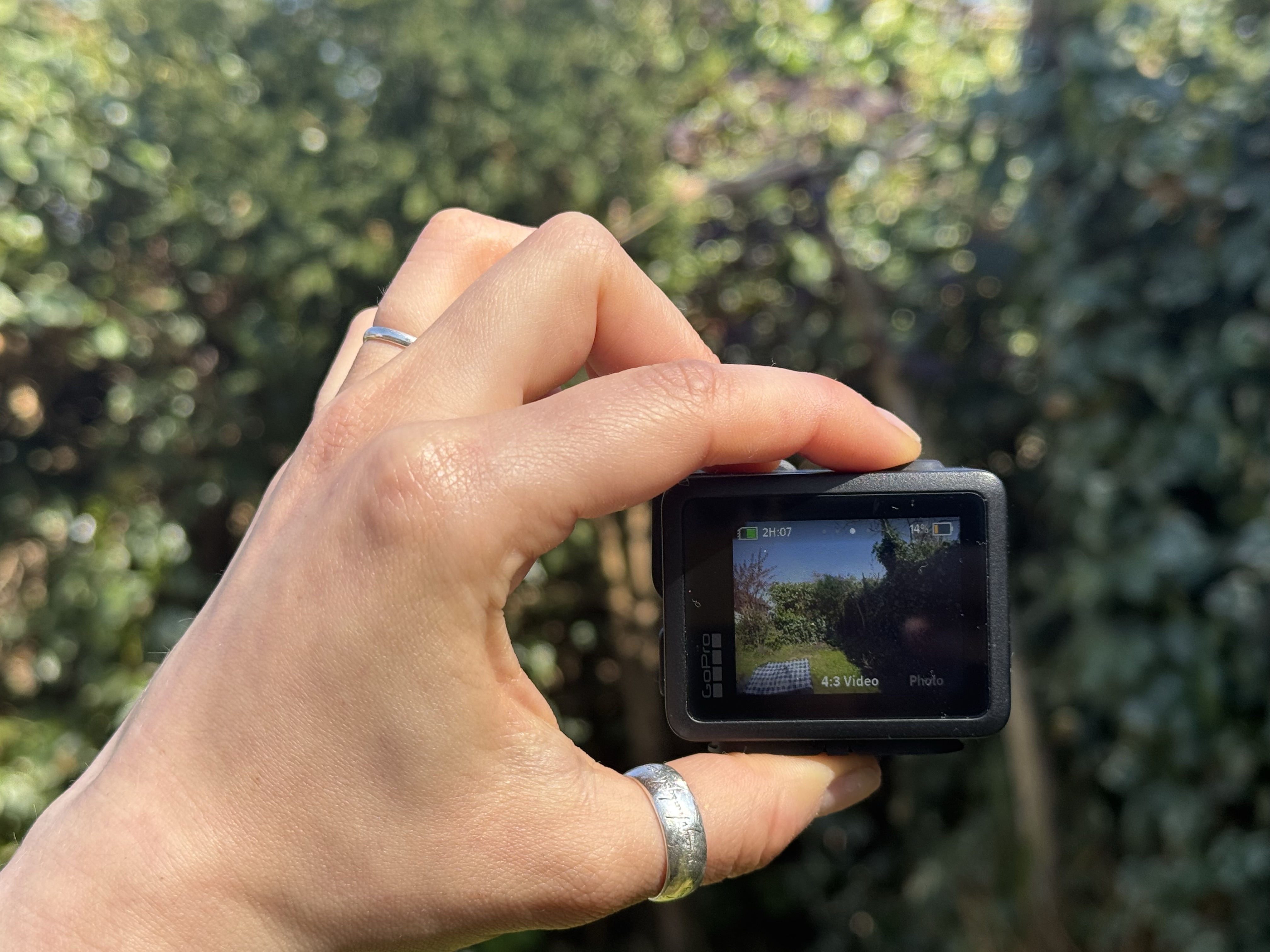
Specifications
Reasons to buy
Reasons to avoid
✅ You want a compact GoPro: The Hero does the basics, but is half the size and weight of a standard GoPro.
✅ You want easy mounting: The mounting fingers save you purchasing an extra item.
❌ You want longer runtime: The non-swappable battery limits how long you can shoot.
❌ You want fancy shoot modes: GoPro cuts down on the shooting options versus its larger cameras.
GoPro has packed its tech into a smaller package with the Hero. It's half the weight of the Hero13 Black but can still shoot 4K video at 30fps. It's also made it easier to operate, a plus when riding. We reckon it's a good beginner-friendly option, although you might outgrow its limited features.
The lens is protected by a replaceable, water-repellent cover. The built-in mounting fingers make it easy to hook up below an out-front mount as well. The Hero has a single rear touchscreen and wireless connectivity to an optional remote as well as voice control.
The Hero automatically uploads footage to the cloud while charging and GoPro has automatic editing to send a highlights video to your phone.
There are some compromises though, principally a non-swappable battery that GoPro says will shoot for up to 90 minutes. The Hero doesn't support TimeWarp video and other fancy shoot modes and you can't attach a wide-angle lens. There's also no in-built image stabilisation, with this sorted out post-shoot in the editing software.
Read our GoPro Hero 4K review for more details.
Best for 360 footage
Specifications
Reasons to buy
Reasons to avoid
✅ You want 360 degree shooting: This is a great option for all-around shots.
✅ You want a handy format: The shape makes the X4 easy to hold when shooting.
❌ You want longer runtime: Runtime is just 71 minutes if you shoot at 8K.
❌ You want a lower price: The bike bundle includes useful extras, but is an expensive choice.
If you've gawped at the exploits of Safa Brian, many are shot with the Insta360 X4. The X4 is still available but has now been eclipsed by the X5, which has similar video quality and frame rates, but replaceable lenses, claimed better low light capture and clearer audio. The X5 also boasts a longer claimed runtime of 208 minutes.
We rated the Insta360 X4 for its ease of use, both when shooting while riding and post-ride editing. It shoots 360-degree video, which you can then frame in editing to cut yourself out or in, depending on how good you look.
The editing suite is a big strength of Insta360's offerings, allowing you to connect wirelessly and quickly frame and cut your footage both on a computer and a phone. You still produce 4K video post-edit.
So too is the ability to stuff it in a jersey pocket, pull it out and, with the 360 degree coverage, just shoot, pointing it anywhere, then frame later. Image stabilisation and horizon lock are great too.
There's also slo-mo available at a maximum 3K/100fps, and the claimed runtime is up to 135 minutes.
Options include a bike bundle with an out-front computer mount, a lens guard and an invisible selfie stick.
We have an X5 currently on test, so stay tuned for a full review. In the meantime, check out our review of the Insta360 X4.
Best for battery life
5. DJI Osmo Action 5 Pro
Specifications
Reasons to buy
Reasons to avoid
✅ You want GoPro style but with longer battery life: DJI's competitor outdoes a GoPro on runtime.
✅ You want added video tech: Subject tracking, horizon stabilisation and other features should make for good quality video.
❌ You don't want to pay for extras: The cost of additional bits you'll probably want mounts up.
❌ You want better availability: The Osmo Action 5 Pro can be difficult to find for US buyers.
DJI supplements its drones with a range of action cameras. While the Osmo Pocket range incorporates a gimbal, the Osmo Action 5 has a more typical GoPro style, making it a better option for mounting to your bike or yourself for shots when riding.
DJI claims superior performance for the large format sensor in the Action 5, as well as longer battery life than GoPro, which gives the option to record a whole ride, not just highlights. Other features include subject tracking and HorizonSteady and RockSteady 3 image stabilisation. There's also SuperNight for low-light shoots.
As is usual with most action cameras, you can accessorise to your heart's content, with a longer life battery, a selfie stick, a remote and a lens protector options. The road cycling combo package adds a handlebar mount and a seat rail mount to the camera.
Best for incedent recording
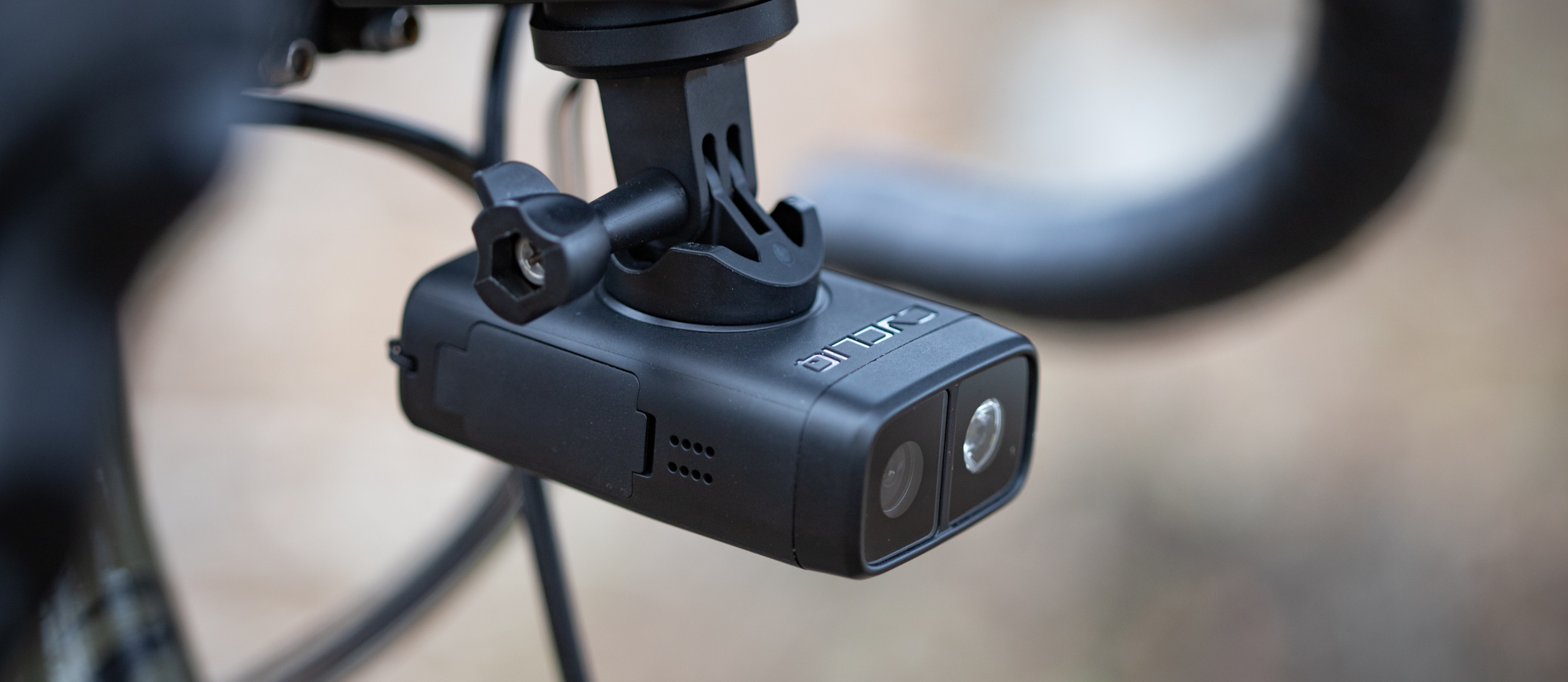
Specifications
Reasons to buy
Reasons to avoid
✅ You want peace of mind when cycling: If something does happen ahead of you, you'll have the footage.
✅ You want a light with that: The Fly12 Sport avoids needing a separate front light.
❌ You want lower weight: At 148g, the Fly12 Sport is quite heavy.
❌ You want better camera quality: It's not a fully-fledged action camera.
If you want to record your mate being taken out by a kangaroo, the Fly12 will do it for you if they're in front. It offers similar functionality to the Fly6 Pro rear camera and incorporates a light as well, although it doesn't have all the features of the best action cameras like horizon lock, wireless data transfer or editing - your footage is on your Mini SD card.
But the Cycliq Fly12 does offer image stabilisation and a long run time of seven hours, which is useful for cyclists. It can be mounted either above or below the bars and you can overlay the footage with Strava data. All the configuration of the light and camera is done via the app, although there's no ability to control it from your cycling computer.
The light is now 400 lumens, down from 600 lumens, which may be a little low for night riding but is probably adequate as a daytime running light. On the other hand, there's now a higher camera resolution. At 148g, the Fly12 is on the heavy side too.
We've also reviewed the similar Garmin Varia Vue, which can record in 4K, although we weren't impressed by the battery life, and there were some software glitches. It's also expensive.
You can read our full Cycliq Fly 12 Sport review for more details.
Best for rearward ride recording
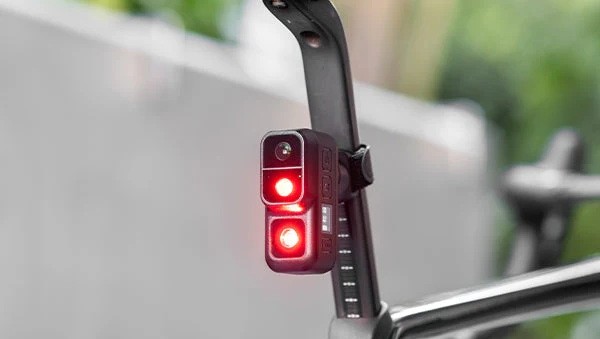
7. Cycliq Fly6 Pro
Specifications
Reasons to buy
Reasons to avoid
✅ You want rearward images: The Fly6 Pro complements the Fly12 Sport for front and rear video capture.
✅ You want long battery life: The seven hour runtime should see you through most rides.
❌ You want more than incident detection: The Fly6 Pro is aimed at incident detection rather than action camera use.
❌ You want a lower weight: The weight has increased significantly from its predecessor.
Cycliq's Fly6 Pro isn't quite an action camera in the traditional sense, but when many cyclists look to action cameras, it's not the 4K footage, live streaming capability and deep-sea diving compatibility of the camera they're looking for. Much of the time, the best action cameras for cyclists offer a simple function of being able to record the ride, in the event of an incident or accident. Now updated to the Pro, that's exactly what Cycliq's Fly6 offers.
Integrated into a 100-lumen rear light, the camera offers highly stabilised footage at up to 4K / 30fps, shooting at a 145-degree angle. The footage is stored on a removable SD card (compatible with up to 64GB, included), which when it fills up, will automatically wipe the oldest footage to provide a continuous recording of the most recent footage.
However, the Fly6 Pro comes with what the brand calls 'Black Box' technology — automatic incident detection that auto-saves footage when a crash is detected. This means it will cleverly preserve the footage from the incident and not overwrite it, so you can rest assured it will still be there when you return home.
Best for crash detection
Specifications
Reasons to buy
Reasons to avoid
✅ You want a built-in radar: Garmin's in-built light and rearview radar offer a lot of extra functionality.
✅ You want an adaptive taillight: The radar can also change the flash pattern when a vehicle is detected.
❌ You want better low-light image capture: It's hard to read number plates in low-light footage.
❌ You want image stabilisation: The lack of image stabilisation contributes to the lower image quality.
If you're already a Garmin user, then this addition to its ecosystem could be a welcome sight. Not only is the Garmin Varia Radar a good rear bike light in itself, but the rearview radar informs you via your bike computer or many smartwatch models of vehicles approaching from behind and can flash to alert them to your presence.
You can also control it remotely from your head unit (dependent upon which model you're using), and use the same apps you're already familiar with to download your footage.
Similar to the Cycliq Fly6 Pro listed above, Garmin's Varia Radar RCT715 also offers automatic incident detection, which isolates the important footage from the rest and preserves it while the recording continues to loop and overwrite older footage. Compared to the Fly6 Pro, the Varia Radar is more affordable and comes with a lot of device and app connectivity potential, although with lower video resolution.
However, it's important to note that it does have some downsides. It lacks 4K video, to keep the battery life maximised, and the key issue our reviewer discovered was that in low-light conditions, the lack of image stabilisation meant that it was impossible to decipher car number plates, which would prove to be unhelpful should you be involved in an incident after sundown.
Still, it's a worthwhile investment that our reviewer had a lot of praise for in our Garmin Varia Radar RCT715 review.
Best drone camera
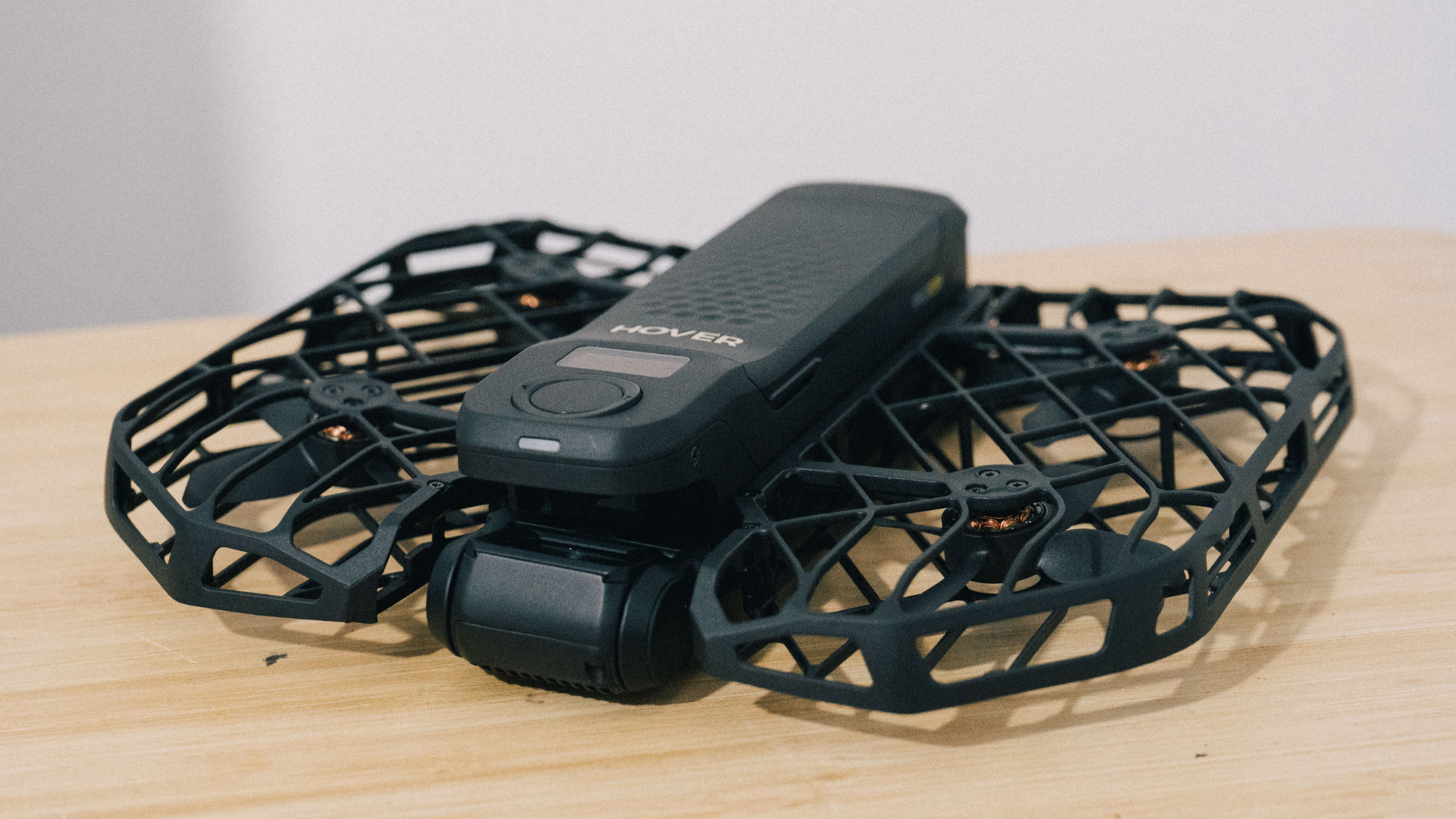
9. Hoverair X1 Pro
Specifications
Reasons to buy
Reasons to avoid
✅ You want to be able to record drone footage on solo rides: The Hoverair is a self-flying drone that will follow you, recording footage as you ride.
✅ You want a simple drone: You don't need to learn how to fly a drone, simply select the type of footage you want to record and distance, and the X1 Pro does the rest.
✅ You want a portable drone: Its compact size means it can be transported in a pocket or bikepacking bag.
❌ You ride in dense forest: The Hoverair does an impressive job of avoiding obstacles, although it has its limitations.
Until very recently, getting drone footage of you riding your bike meant being friends with, or employing a videographer with a drone, or being exceptionally cavalier with your safety and trying to pilot the thing while riding.
Hoverair has really changed the game on this front with its self-flying drones. The original X1 was good for some sports but fell a bit short for cyclists due to the slower maximum speed. The X1 Pro is certainly a more expensive option, but it’ll allow you to film yourself riding in places other than just up a steep hill.
I’ve found it to be pretty easy to learn to use. Simply connect it to the app, select what sort of flight you want (follow, in front, overhead, panning, etc) and the distance you want it at, and then set it off and just ride.
It’s not perfect, but it’s more than capable of tracking you through woodland, and with a top speed of 60km/h, it can even handle sprints and descents. Once you’re done, just hold out your hand and it’ll come back, land on your palm, and you can store it neatly in a jersey pocket, so no extra luggage is needed.
Best intigrated camera
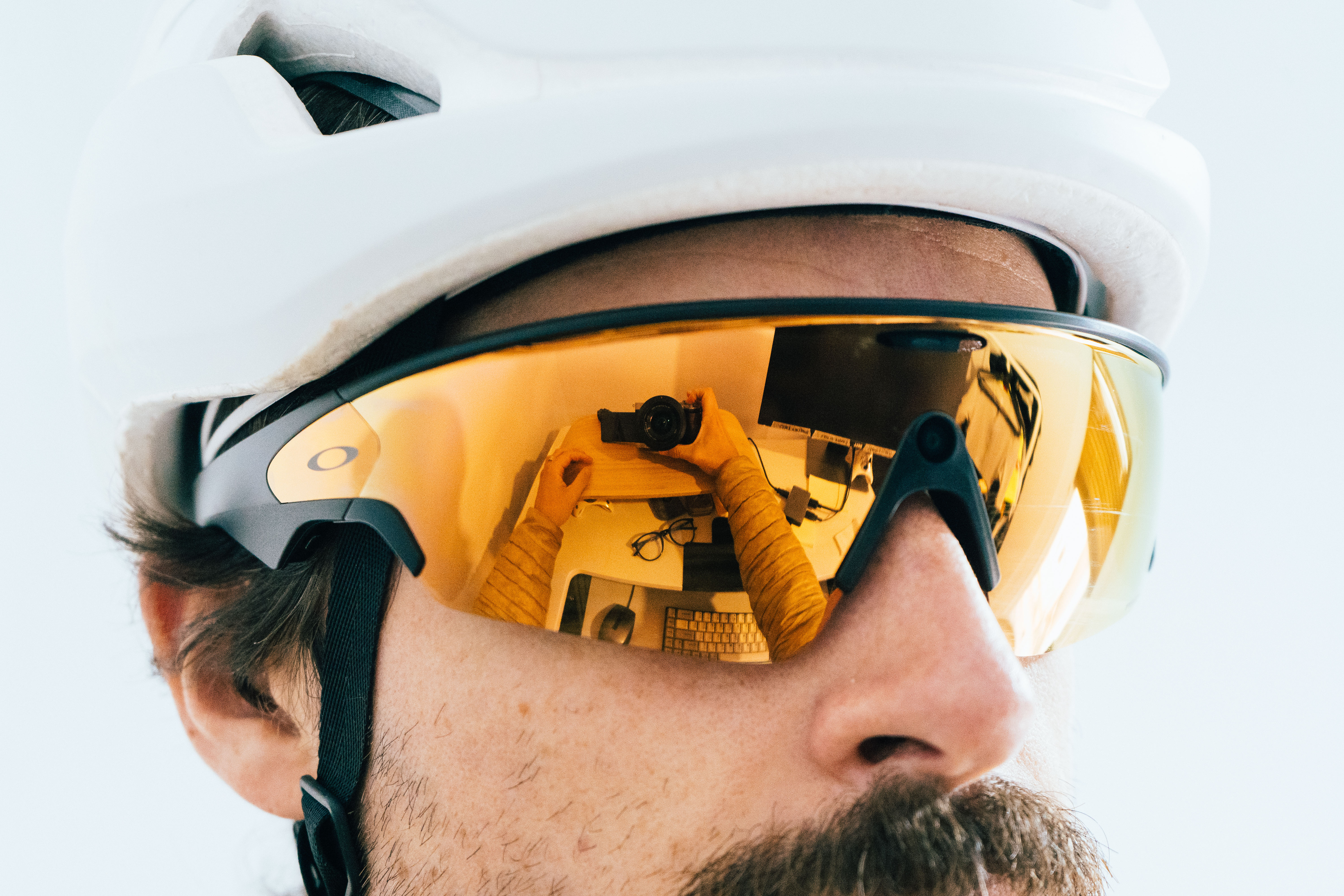
Specifications
Reasons to buy
Reasons to avoid
✅ You want an easy, hands-free way to record content: With just a simple voice command, you can create POV content to share on social media.
✅ You don't want to carry a separate camera: The camera is fully integrated into the sunglasses without
✅ You want additional features: Not only are they sunglasses and a camera, but the Vanguards also have music playback, message notifications and AI-assistant features.
❌ You want high-quality footage: Video quality is only good enough for social media and sharing with friends.
❌ You want an affordable way to create content: The glasses are expensive, and arguably not as good as all the standalone products they promise to replace.
❌ You don't want to be weird in public: Saying "Hey Meta" to create a picture feels very cringe.
Yes, I know, these are sunglasses. They also contain a very small camera right between your eyes that can capture things as you see them, though, as well as a host of AI features powered by the Meta AI app on your phone.
The footage is certainly not going to challenge the likes of a dedicated, 4k capable action camera, but for social media use it’s perfectly adequate, and as you’re probably going to be wearing sunglasses anyway, then it’s about as unobtrusive a setup as it's possible to get. You can even use voice commands to start/stop recording and take photos, meaning no risky hands-free manoeuvres while riding.
Unlike most smart glasses, they’re also very good sunglasses in their own right, as you’d expect with the Oakley name behind them. The downside is that you will be shelling out more than the cost of the likes of the Insta360 Go Ultra for something with worse optics, so consider your end-use carefully.
For more details, check out our Oakley Meta Vanguard review.
How to choose the best action camera for cycling
Here are the considerations that we think are important when choosing the best action camera for your needs. Read our FAQs further down this page if you want more detail.
- What video quality does it support? Most action cameras now support 4K or more, but a cheaper one may only shoot in 1040 HD. That may be fine, depending on what you want to do with your footage.
- What frame rates can I select? If you want slo-mo, you'll need the option to shoot at 120fps or 240fps.
- Is there good image stabilisation? Bikes bounce around, so some form of image stabilisation is definitely useful if you want good image quality.
- How is low-light performance? If you're planning to shoot year-round or early or late in the day, you'll want good light sensitivity.
- Is there an editing suite? If you plan to edit your footage, make sure there's a decent editing suite that supports your needs or that you can find one to suit. As with the camera itself, there are degrees of sophistication, so make sure you have the functionality you expect to use.
- What's the battery life? Many action cameras have shortish battery life, particularly if you want to shoot in high definition, so make sure that your battery will last long enough for your needs.
- Can I swap in a spare battery? Many, but not all, action cameras allow you to sub in a second battery if the first runs flat. You may find this handy, although it's another extra cost item to buy.
- What memory capacity can it support? If you want to shoot in 4K or greater, you'll soon fill up a Micro SD card or internal memory. You can buy cards with 1TB of memory, but can you use them in your camera? Also, make sure your card is fast enough for video capture by checking its video class.
- What are the mounting options? Most action cameras can be used with a variety of mounts for your bike and you, but make sure that there's something available to support your plans and check the price.
- How easy is it to mount to my bike/me? How easy is it to use the mount? Do I need other parts, such as an out-front mount with a GoPro adapter?
- How weatherproof is it? If you're out in the rain or on muddy paths, you'll probably want IPX6 or better ingress protection.
- Is there a remote? A remote can be handy to stop and start recording and preserve your camera battery.
- What does it weigh? Most cyclists want low weight, so bolting a chunky action camera to their bike may not be a good idea.
- What does it cost? Finally, keep an eye on the price. This can soon rise if you need to add extra batteries, mounts, camera protection and more.
Everything you need to know about the best action cameras for cycling
What video quality do I need?
Action cameras have been capable of shooting in full HD for a while now and almost all are now able to record 4k video or better. If you want to record slow-motion action, look for cameras with high frames per second (FPS) settings; 240fps will allow footage to be slowed down by 8x, and even budget cameras will allow at least 2x.
With the rise in popularity of vlogging and producing video edits, high-end cameras offer advanced features to achieve the highest quality. Higher quality optics, stabilisation and audio make a huge difference to a video’s quality as well as the ability to record in advanced log format. Log formats such as GoPro’s Protune or DJI’s D-LOG settings capture more data and allow greater flexibility when editing in post-production.
On the minus side, 4k video takes up a lot of storage space, so you'll need a large memory card, possibly with a backup. Runtimes may be short due to the battery too, so you may need a spare. Full HD still offers adequate resolution for many purposes and may increase your shooting time.
Do I need image stabilisation?
There have been several big advances in stabilisation recently as camera manufacturers try to smooth footage to make content shot in bumpy environments, including when cycling, more watchable.
Optical stabilisation offers the best results, however electronic stabilisation, such as GoPro’s HyperSmooth is very capable of removing the camera shake effectively. Even budget cameras are starting to include image stabilisation, although do not expect the same results as the top-of-the-range models.
Should I get a touchscreen camera?
A touchscreen is the most popular method of control and allows easier shot framing, menu navigation and video replay. However, touchscreens are useless in environments that are very wet or require gloves.
If you ride in all weather, it's worth considering whether important shooting modes are still accessible through buttons. You may have the option of a remote.
Should my camera connect to an app?
Most camera manufacturers offer a mobile phone app that allows remote camera control, video playback and uploads to social media. Some apps have editing features to combine clips and add music before uploading, allowing quick edits to be shot, edited and uploaded without needing a computer.
Where should I mount my camera on my road bike?
This all depends on what you're trying to achieve, but generally, the most common places to mount an action camera are on the handlebars or beneath the saddle.
Depending on how much real estate you have up front, you may want to opt for an upside-down mounting, which doesn't usually affect the footage.
Many out-front cycling computer mounts can be fitted with a GoPro mount on their underside, which most action cameras from other brands can also use.
Filming at the front of your bike allows you to capture the open road, whereas filming at the back will allow you to capture footage of your friends and fellow riders, as well as approaching passing drivers.
Helmet mounting gives a higher vantage point and should also keep the lens cleaner if you're riding in dirty conditions or taking to gravel trails. A chest mount is popular for mountain bikers and might work for gravel, but the position adopted by road riders means that you may just get some great footage of your stem.
Many action camera brands sell a selfie stick to fit their cameras. It's a great option if you want a drone-style view without actually buying a drone and some are 'invisible' so they don't show up in the footage.
If you mount it to your bike, good image stabilisation will be critical, while if you hold it, you're going to be limited to short, easier runs which you can ride one-handed.
How do we test the best action cameras?
We take a structured approach to testing at Cyclingnews. Items for review are requested from suppliers and assessed for ease of set-up and photographed.
Then we're out on the road or trail, seeing how easy they are to operate in a range of conditions. We'll review them over a period of weeks to see how we get on with them and how well they function in real-world riding, drawing up our conclusions along with a detailed scorecard to support them.
Read our How We Test page for more.
The latest race content, interviews, features, reviews and expert buying guides, direct to your inbox!
Mildred joined as Reviews Writer for Cyclingnews and BikePerfect in December 2020. She loves all forms of cycling from long-distance audax to daily errand-running by bike, and does almost everything on two wheels, including moving house, and started out her cycling career working in a bike shop. For the past five years she's volunteered at The Bristol Bike Project as a mechanic and session coordinator, and now sits on its board of directors.
Since then she's gone on to write for a multitude of cycling publications, including Bikeradar, Cycling Plus, Singletrack, Red Bull, Cycling UK and Total Women's Cycling. She's dedicated to providing more coverage of women's specific cycling tech, elevating under-represented voices in the sport, and making cycling more accessible overall.
Height: 156cm (5'2")
Weight: 75kg
Rides: Stayer Groadinger UG, Triban RC520 Women's Disc, Genesis Flyer, Marin Larkspur, Cotic BFe 26, Clandestine custom bike
